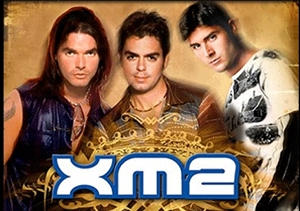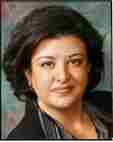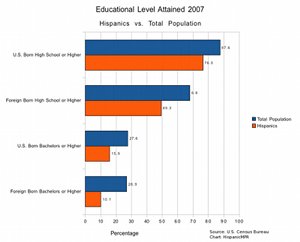Posted by Elena del Valle on February 9, 2009

XM2 Group
Photo: Spanish Broadcasting System
In April, Mega TV, part of Spanish Broadcasting System (SBS), and Worldvibe Entertainment will broadcast Batalla de las Américas, a new prime time musical reality show to find the newest member of the XM2 Group. As part of the process in late January, Mega TV invited men singers between 18 and 30 years old from Miami, Los Angeles, New York and Puerto Rico to compete to represent the United States, including Puerto Rico, in the grand finale.
Auditions were held in Miami, New York and Los Angeles earlier this year. The representative from Puerto Rico, selected at the SBS studios at Guaynabo in late February, will compete in the final event in April 2009 in Miami.
During the grand finale of the musical competition in South Florida Thursday, March 19, 2009 the four semi-finalists from Miami will compete against the four semi-finalists from Los Angeles and New York.
Batalla de las Américas, expected to have 20 contestants from 15 countries competing in originality, creativity, heart and talent, was created to be similar to Making the Band, another reality program in English. XM2 Group members are Rawy Torres, Jonathan Montenegro and Sergio Blass.
Spanish Broadcasting System, Inc. is one of the largest publicly traded Hispanic-controlled media and entertainment companies in the United States. SBS owns and operates 20 radio stations located in Hispanic markets such as New York, Los Angeles, Miami, Chicago, San Francisco and Puerto Rico. The Company also owns and operates Mega TV in Miami. WorldVibe Entertainment is an entertainment company specializing in television production, touring, merchandising and tech marketing to Hispanics in North America as well as audiences in Latin America for television, film, music, tours, events and video products.
“Marketing to Multicultural Kids” audio recording

Michele Valdovinos gives a presentation and participates in an extended Q&A discussion about multicultural children based on a Phoenix Multicultural and Nickelodeon study of 1,300 multicultural children in 16 United States markets.
Find out about
• The Phoenix Multicultural Kids Study
• Relationship between children and their context
• Issues relating to family, technology and media, diversity, buying power, relationships in household, self perception, values, acculturation, cultural heritage, frequency of media activity, income and spending, brand preferences, the American Dream
• How many billions of dollars buying power multicultural kids children have
• Children’s spending attitudes, habits by ethnicity
• How much money a year Hispanic kids have available to spend
• Types of products Hispanic kids buy
Click here for information on “Marketing to Multicultural Kids” audio recording
Posted by Elena del Valle on February 6, 2009
Information provided by our Event Partner

April 19-23, 2009 * Eden Roc, A Renaissance Beach Resort & Spa * Miami Beach, Florida
Bringing together over 1,000 powerful music executives, artists, composers, sponsors and press, it features four full days of programming, showcases, educational sessions, parties and networking events. Week highlights include the Billboard Bash, a pre-awards extravaganza featuring live performances by top acts, and the annual Star Q&A, an intimate one-one interview conducted by Billboard’s executive director of Latin content, Leila Cobo.
The week is capped off by the longest running, most prestigious awards show in the music industry, The Billboard Latin Music Awards, which honors the biggest and brightest stars in the industry. From the dazzling red carpet to stunning performances by the NO. 1 artists on the charts, this is “the” Latin music award show that truly reflects the best in the marketplace.
The Billboard Latin Music Conference & Awards is part of Billboard’s long-standing editorial commitment to Latin music coverage. Billboard magazine publishes weekly charts and a expanded weekly Latin music section as well as special stand sections 4 times a year which provides even more in-depth coverage.
Register today for only $549. That’s a $150 savings!
www.billboardlatinconference.com
Posted by Elena del Valle on February 6, 2009

The 130-page Who’s Buying Executive Summary of Household Spending Third Edition (New Strategist, $59.95) features concise data on buying across the country for 2005. The paperback book includes information on consumer spending patterns by age, race and ethnicity, household type, and region.
The source of the information is the Consumer Expenditure Survey of the Bureau of Labor Statistics, a national survey of household spending. There are indexed spending figures illustrating what households spend on many products and services, and whether the households expenditures in a segment are higher or lower than the average for all households in that segment and by how much. The indexed spending tables, based on the average figures, were produced by the publisher’s staff.
The book lists data for 2005 as follows: Spending by Age, Spending by Income, Spending by High-Income Consumer Units, Spending by Age and Income, Spending by Household Type, Spending by Household Type and Age, Spending by Region, Spending by Region and Income, Spending by Metropolitan Area, Spending by Race and Hispanic Origin, Spending by Education, Spending by Household Size, Spending by Homeowners and Renters, Spending by Number of Earners, and Spending by Occupation.
New Strategist is a New York publishing company. Other titles published by the company include Household Spending, Who’s Buying for Travel, Who’s Buying Apparel, Who’s Buying Health Care, Who’s Buying Household Furnishings, Services and Supplies, Who’s Buying for Pets, Who’s Buying by Race and Hispanic Origin, Who’s Buying at Restaurants and Carry-Outs, Who’s Buying Transportation, Who’s Buying Groceries, Who’s Buying Entertainment, Who’s Buying by Age and Who We are Hispanic.

Click here to buy Who’s Buying Executive Summary of Household Spending
Posted by Elena del Valle on February 4, 2009
5 Ways Hispanic Business Owners Can Boost Sales with Promotional Products
By Julius Rosen
CEO, Best Logo Products

Let’s face it. In today’s world, people are bombarded with advertising so it can be hard to market your business effectively. Promotional products offer a unique and affordable way for Hispanic business owners to get their name out to potential customers without being obvious.
Promotional products range from pens to totes to key chains, all with your company’s name and contact information imprinted on them. Here are 5 ways Hispanic business owners can boost sales with promotional products.
Click here to read the complete article
“Segmentation by Level of Acculturation” audio recording

Presenter Miguel Gomez Winebrenner
Discusses
- Assimilation versus acculturation
- Factors that affect Latino acculturation
- How to know if someone is acculturated
- Number of years necessary for acculturation
- Effects of immigration debate on acculturation
- Three main ways of segmenting Latinos
Click here for details about “Segmentation by Level of Acculturation”
Posted by Elena del Valle on February 2, 2009

Educational Level Hispanic vs. U.S. Total Population 2007 – click on image
When it comes to advanced degrees foreign-born residents exceed native-born residents, according to a U.S. Census Bureau report released last week. In 2007, more foreign born people living in the United States had master’s degree or higher than native-born residents. Nationally, 11 percent of people born in another country who lived in the United States and 10 percent of U.S.-born residents had an advanced degree.
That same year, 84 percent of adults 25 and older said they had at least a high school diploma and 27 percent claimed to have a bachelor’s degree or higher. At the same time, across the whole country a smaller percentage of foreign-born than native-born adults had completed at least a high school education. Only 49 percent of foreign-born Latinos said they had graduated from high school while 49 percent of Asians indicated they had graduated from college or higher.
While 87.7 percent of U.S.-born residents said they had a high school diploma only 76.5 percent of U.S.-born Latinos graduated from high school; 68 percent of foreign-born residents had a high school diploma and 49 percent of foreign born Latinos had graduated from high school. Undergraduate degrees were less common. Some 27.6 percent of U.S.-born residents said they had a bachelor’s degree or higher and 15.9 percent of U.S.-born Latinos had a bachelor’s degree or higher. Just over one quarter of foreign-born residents (26.9 percent) claimed a bachelor’s degree or higher while 10 percent of foreign born Latinos had such degrees.
In the West, the percentage of foreign-born who had completed at least a bachelor’s degree or higher was less than the percentage of the native-born, 24 percent compared with 31 percent respectively. In the Northeast, both groups had 32 percent with bachelor’s degrees or more. The foreign-born in the South (26 percent) and Midwest (31 percent) were more likely than native-born residents to have at least a college degree (25 percent and 26 percent, respectively).
The report also indicates that: 84 percent of adults 25 and older had completed high school, while 27 percent had obtained at least a bachelor’s degree in 2007; a larger proportion of women (85 percent) than men (84 percent) had completed high school; a larger proportion of men had earned a bachelor’s degree (28 percent compared with 27 percent); the percentage of high school graduates was highest in the Midwest (87 percent), and the percentage of college graduates was highest in the Northeast (32 percent).
Also, men earned more than women at each level of educational attainment. The percentage of female-to-male earnings among year-round, full-time workers 25 and older was 77 percent; workers with a bachelor’s degree on average earned about $20,000 more a year ($46,805) than workers with a high school diploma ($26,894). Hispanic and black workers earned less at all levels than non-Hispanic whites and Asians.
The information in the report is from Educational Attainment in the United States: 2007, a report that describes the degree or level of school completed by adults 25 and older. This data stands out because it’s the first Census Bureau report on educational attainment to use data from the Current Population Survey and the American Community Survey. Researchers point out that combining the two data sets provides a state-by state comparison of educational attainment while providing an examination of historical trends.
Target Latinos effectively by anticipating changes in the market with
“Hispanic Projections with 2007-08 update” audio recording

Presenter Roger Selbert, Ph.D.
Find out
- About Latino buying power growth in the future
- How Latino market growth compares with other markets in the U.S.
- What drives the rise of Latino economic clout
- Who should target the Latino market
- What is the size of the Hispanic affluent market
- If the luxury Latino market is growing
Stay ahead of your competition with “Hispanic Projections”



















